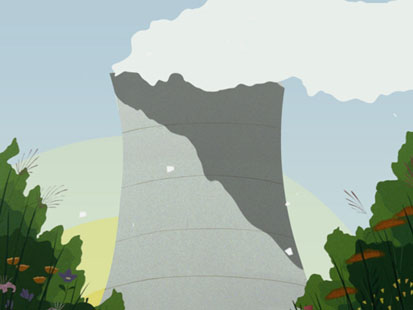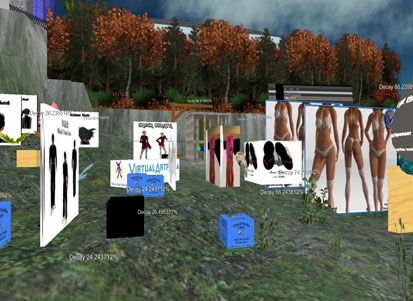What’s that old girl scout rhyme? Make new friends, but keep the old… I kept humming this tune to myself this week as I edited both an interview from departing Austin mainstay Arturo Palacios as well as this conversation with fresh(to Austin)-faced William Heath and his Providence-based partner-in-crime, Zeljka Himbele. Heath, a schemer and a dreamer, has made many stops on the map but is now claiming our town as his permanent (really!) home. I first met Heath in his former haunt, the wild and amazing LA space Royal/T. We immediately hit it off, and he told me he was soon moving to Austin. I didn’t believe him! But one day he magically appeared, spouting wild and wonderful art visions of the future. And now he’s co-curating an impressive exhibition, Mercury Retrograde: Animated Realities, at Big Medium with Croatian dynamo Himbele, currently of the RISD Museum. International animation show? YES, PLEASE.
Don’t miss the closing event for the show this Saturday night, 5-8 PM.

Kate Watson (K): You two met at Bard in the Curatorial Studies program and have been collaborating on exhibitions ever since. Can you tell me a little bit about how that conversation has evolved? How have the economic and political climates shifted the nature of the work?
William Heath (W): We became friends pretty quickly while stuck up in the woods in upstate New York. Snowed in with beers and Breezers, Zeljka would always indulge my fantasies of ice cream truck art shows, museums-gone-malls…we really shared a love for American roadside kitsch culture.
Zeljka Himbele (Z): And Will would kill the weekly school routine with America’s Next Top Model night! We still hadn’t worked on an exhibition together at that point, but we were getting to know each other’s tastes. For me it was really something special, since before coming to Bard I hadn’t even visited the U.S. It was interesting exploring America with Will (still is!), and I am sure it was fascinating for him to figure out my “(Eastern) Europeanness”….
W: Mercury Retrograde: Animated Realities is the second exhibition we have done together…it’s become an annual curatorial summer camp for both of us. It’s great to work together and compare the difference in our practices: I come from a really guerrilla-style art background. Collaborating is central to everything I do, whether it’s a dance party or an exhibition. Zeljka, on the other hand, has always worked for prestigious institutions with many more resources than I’ve ever known. But putting shows together feels like a natural duet. We improvise, and intuition rules the process. We spend a lot of time making lists of our favorite work and then we look at the connections until a show emerges.
Z: Actually, we have latent ideas for at least ten shows, just waiting to jump out! So whenever an occasion presents itself, it’s actually very easy to finalize the exhibition idea because it already exists in our heads. This fast way of working is a welcome change of pace for me: it’s very different than the structured environment of a museum.
W: My thinking is always hotwired to the current economic context. I’m actually happy about the recession! It’s been a huge flashing reset button and has made room for me to insert myself into places I’ve had a hard time getting access to. The economy is just another constraint to play with.
Z: We think in quite opposite ways about the recession. I think that it drastically affects both the quality and quantity of art practices, and, even more, a wider, public recognition of art. Currently, I can’t help but compare the huge differences between the American and European support infrastructure. Even in the current economical climate, Europe is still investing so much more in art.

K: In your press release, this statement struck me immediately: “although we might secretly smell magpie lust for opulence and luxury, the artists adamantly maintain positions that stand firmly between opposition and complicity.” Will you speak a bit to this tension? It seems to capture a particularly contemporary attitude…
Z: Artists in the show recognize that they belong to the mass culture as much as anyone else. They think about it and/or criticize it from the inside, not from the outside (like that would be possible!).
W: I get a lot of shit for loving mass culture so much. I’ve been spending a lot of time at Highland Mall recently, walking around and thinking about what an amazing venue it is. I make peace with my consumption guilt by using materials from the dollar store and using cheap stage tricks whenever possible. We are in a moment when we are feeling shame and hesitation about satisfying our consumer desires, and the artists we’ve selected gesture towards this dilemma.
K: Will, you recently moved to Texas. How has this geographical and cultural shift affected your ongoing curatorial conversation with Zeljka? And why Texas in the first place?
W: A lot of research went into my move to Texas. I made a pact with my family that once we were ready to settle down, we would pick a city that had everything minus hurricanes, high real estate, and homophobia. This is my new home, now and forever. I can’t wait to work on developing a more unified art scene: one of my main goals is to develop a more diversified collector base by using a wholesale model to push things out, as well as getting Texas collectors at large into Austin more frequently.

K: An exhibition of international video artists making animation is particularly unusual for Austin. Was this part of your interest in bringing the work here? What has the audience’s reaction been to the work?
W: It was simple for me. We had time and budget constraints, but a lot of resources available…video was just a given. I don’t typically curate video shows and I felt that the videos had to really deal with their own materiality in a substantial way. Also, I wanted to evoke a strong sense of motion and vertigo in the viewer.
Z: We’ve been acquainted with artists in the show for quite sometime, particularly the works by Cliff Evans, Takashi Murakami and Kristian Kozul. We were specifically drawn to them because of their interest in everyday surroundings saturated with media and consumerism, as well as their seductive and flamboyant aesthetics.
K: Will, what do you imagine for the future of the Austin art community? Care to share some of your future plans?
W: I moved here because I see huge potential to poach people from cities all over the world. Rent is cheap and plane tickets cheaper. I know so many talented, amazing people that are underemployed all over the world right now and I want to bring them all here. I am currently looking for a space to open a new kind of talent agency to represent these visual arts and design professionals: I am hoping to be open for business early next year.



